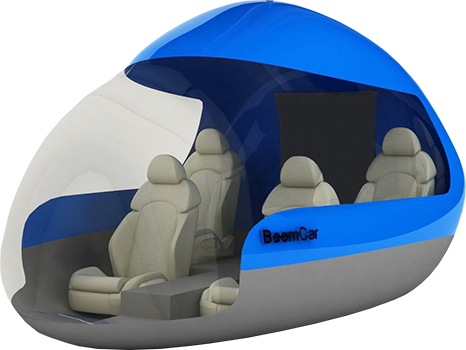The system operation is based on a few simple ‘rules of the road’; all traffic on the main beam has priority and travels in the same direction at a constant 50km/hr, controlled by the beam-mounted controllers that ensure just the right amount of power is injected through the LIms to keep the pods moving at a constant operating speed. This speed is maintained through the bends by superelevation, where the pod is allowed to swing out around the bend. Pods joining the main beam from stations set off so that they are timed to fit into gaps on the main beams. Each pod is individually programmed to travel direct from ‘A’ to ‘B’, by the shortest route, without stopping.
Upon entry to a station, the pod is automatically braked, twisted to bring it into line with the platform, and stabilised so that it doesn’t move while passengers alight and board. Once the pod has stopped, the door opens automatically for passengers to alight. The door will remain open until passengers have boarded and the ‘Close Door’ manually activated, when the door will close under power assistance, after route selection and payment has been made. This will be by contactorless technology using credit or debit cards, or a payment card such as the Oyster card, as used in London.
The pods operate autonomously and only stop when in stations, or when there is a power failure. This makes for much safer operation and enables shorter headways, with the consequential uplift in system capacity. In an emergency, power can be turned off on sections of the network, without affecting other parts. Pods will automatically follow the selected route, slotting into ‘free’ slots as they travel through junctions from one main beam to another, using positional information from sensors located before and after junctions. The LIMs will only power up when required, prior to the arrival of a pod and while it is passing through, which minimises energy consumption considerably.


